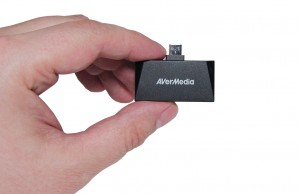At a recent panel discussion in Australia, a group of online video content publishers were asked what their overall goal was. One spoke up without hesitation: “We want you to watch one more video.” He was entirely right. The Internet is so vast that 99.9% of the time, a viewer is probably not on your site—they’re on someone else’s. So it’s vital to maximise the amount of time they spend with you when you have them. This is particularly true if your site depends on advertising video on demand (AVOD). In that case, you need your curated and editorialised video content toearn truly deep audience engagement every day. One thing is clear: the measurement game has changed. The “latest numbers” used to mean the early-morning ratings report, a heavily-extrapolated viewership table that determined what TV shows would survive and where advertisers would spend their billions. These results were supplemented with a web viewing report that showed which of your pages were getting good traffic online.
But now we have access to absolute measurement of Internet-delivered video content. Clarity like this can be disturbing: there’s no escape for a poorly-viewed video. On the other hand, it opens up a wealth of possibilities for analysing all your content in nearly real-time, making key decisions that will drive viewership and stickiness almost immediately, promoting your best videos and giving that poorly-viewed video the chance at a new high-performing life. The Big Data genie is well and truly out of the bottle, and it offers us all a lot more than three wishes for better video results. Making the most of this data is critical if we’re to truly understand viewers and cut through the clutter to engage them.
So, what’s the best way to ensure maximum time and eyeballs on your video offerings? Our Strategic Media Consulting team has looked at this question from many angles, based on Ooyala’s analysis of billions of video interactions every year. The data we collect can inform content licensing and creation decisions, editorial placement, content recommendation & personalisation, which devices to target at what time of the day, and so much more.
In this paper we’ll look how four actual Ooyala customers are mining today’s advanced data to drive quick and powerful business outcomes.
‘GO WITH THE FLOW’
Once you have a viewer watching video on your site, how do you keep them hooked? How do you avoid the dreaded one-video bounce? The trick is content flow and recommendation.
Online video is not television: you can’t just sit back and expect viewers to keep watching. A national TV network doesn’t get you to watch the end of a show and then take the screen to black, waiting expectantly for you to choose what to watch next. It guides you. This ‘flow’ is what TV execs get paid for: the ability to slip you into the
next piece of content before you know what happened.
So why should online video be any different? If a viewer pauses or comes to the end of a video clip, it’s up to you to make sure they know what they can watch next. Your curation team should draw an editorial content trail right through your offering.
A product like Ooyala’s own ‘Discovery’ can help you gather information about all the videos being watched by your viewers, and then offer up trending or popular videos to watch next. Don’t expect an algorithm to do all the work for you, however: you know your viewers better than anyone else, so use your insights to draw up partnering clips, packages and themes that your audience can follow. Then let the machines fill in the blanks to surface content links you hadn’t thought of, or things you want to promote.
RECOMMENDATIONS
Think lengths. Split your video library into long-form, medium-form and short-form videos, analyse these splits and adopt audience flow techniques that work best for each. Pay attention to where your viewers drop off your video across lengths; short-form results could well be different from long-form. If viewers are leaving too early, then maybe you’re just not giving them the opportunity to flow to the next video. Have a look at your content to see where the prime early drop-off spots are, then look to make changes there with the goal of keeping viewers engaged all the way to the final frame.
Arsenal Media Group Case Study
Arsenal Media Group recently asked if Ooyala could help them understand where to place a ‘coming up next’ pointer on their video content to get their subscribers to watch ‘one more video’. Marketing and promotion was working very well to drive viewers to the site, so this was now about the content library being discovered as effectively as it could be; with the intended result to promote time spent viewing, engagement with the brand & cross pollination from video viewing to other business goals. We used analytics to draw imaginary lines that split their video content views into long-form, medium-form and short-form lengths. Then we looked at how many viewers were staying through specific checkpoints of each video. This analysis showed exactly where a ‘coming up next’ pointer could be placed for maximum engagement in each type of video. For content less than 3 minutes long, for instance, the optimum spot was 24 seconds prior to the end screen ― about 80% of the way through those short-form videos.
Arsenal Media Group will now use this detailed breakdown of viewer data to further drive engagement across their content offerings. For every video, they will maximise the effective audience who’ll see which exciting video is ‘coming up next’ and ensuring their fans watch ‘just one more’.
DISRUPT YOURSELF
Forward-thinking broadcasters and publishers have created teams within their organisations designed to ‘disrupt themselves’. This may sound odd, but think about it for a moment: disruption of an existing model is simply inventing a new way of doing something that already exists. So before you’re disrupted yourself, wouldn’t it be great to know where that disruption might come from, be prepared for that disruption and even have a readymade strategy to counteract it? Why not figure out the additional value your customers are seeking before they find it elsewhere? Consider a well-established pay-per-view cable TV channel. Let’s say that it’s a premium football channel, and that customers pay $5 per month on top of their basic subscription price to view it. Now consider that same channel, but in the new world of on-demand internet video. Now you can simulcast it over the Internet to reach a new fanbase that was simply unreachable before on cable. Next, extract the individual programmes from within the channel and make them VOD (video on demand) assets. Now you can choose how to monetise them: give access to all as a monthly subscription video on demand (SVOD) model, or one by one in a new pay-per-view or
advertising video on demand model (AVOD). Now let’s unpack those individual VOD assets further and think about how a fan might want to interact with them on a mobile device. Jump to the online club shop to buy a replica shirt when their favourite player scores a goal? Head straight to the ticket site after watching a match preview for the coming weekend? Post an opinion about the recent transfer during an interview video with the coach? Or even join the match day experience without leaving the front room—possibly even on the other side of the world.
It’s all possible. The trick to online video engagement is creative thinking. Television didn’t thrive for 60 years by thinking about technology; it thought about content and creativity. The only thing that’s changed is how a video gets to your viewer. And now you can invite millions of global viewers to take part in an experience that before was only for the fortunate few in your time zone.
RECOMMENDATIONS
Think about how you, as a fan, would want to interact with your video content. Don’t just play a video out; assist your loyal fans in joining the experience. Help them become a part of the world they love but in the past could only watch from afar. That’s the real key to engagement. Video is a critical part of the story because video can lead to the other revenuegenerating parts of your digital experience. Think of video as the hub of your digital offering and you’ll be on the right track. How does your video offering promote and fulfil your overall business goals throughout your digital presence?
Disrupt your own approach to video in this new world of interaction… before someone else disrupts it for you.
Vienna State Opera Case Study
The historic Vienna State Opera was ready to become a fully-fledged international broadcaster. They wanted to share opera performances in a way that could go beyond traditional broadcasting to engage fans around the globe and support multiple monetization models. Ooyala’s team helped the Opera reach new fans through their PCs and mobile devices, as well as through a pre-installed TV app in partnership with Samsung. Classics like Rigoletto and The Magic Flute could now be broadcast live from the opera house as a premium PPV service; released as “as-live” performances for each time zone; and archived for sale as TVOD videos. Today, opera fans from around the globe can watch these beautiful performances, and the opera is on track towards its goal of 1,000 live viewers per event.
TAILOR TO YOUR PLATFORM
We’ve all read the statistics about how much of the Internet’s content will be video in the year 2018. But the real issue is how many platforms all that video will be viewed on. Ooyala’s Global Video Index shows clearly how and when various devices are used by viewers during their day. Smart phones are used heavily during morning (and afternoon) commuting times, as bleary-eyed workers catch up on the latest headlines and ‘snack’ on video clips wherever they find them. At lunchtime, the desktops take over as workers take a break to watch video while eating at their desks. And at night, tablet ‘prime time’ actually has been proven to last longer than TV prime time, for the simple reason that folk take their tablets to bed with them. (A lot easier than dragging a 55” flat screen onto the mattress.) The Global Video Index also shows in great detail how much video is being viewed on mobile devices and how IP-delivered video is gradually becoming the norm for entertainment on big screens, complementing the existing linear broadcast world. The most successful video business models look very carefully at each platform on which they’re delivered and tailor the content, graphics, length and editorial to the unique ways viewers consume content on that platform. Let’s look at Facebook and Twitter, for example. No doubt they are smashing through large video numbers, yes. But how do you convert your auto-starting video from clips that people scroll past, to clips that deeply engage your target audience?
The key is to look at how social media viewers use video. You don’t have long to grab someone’s attention on Facebook; the whole ethos is about discovery and ‘quick fixes.’ So you need to start your video off with a bang. You need a very clear opening frame with a strong hook. Also, remember that without a full clickthrough, video on social media will play without sound. If you’re clever about it, you can craft your video to get its message through just as effectively in silence, using wellplaced graphics and text to tell your story to a time-poor audience.
RECOMMENDATIONS
Test your own content. Take a 30-second piece of content as it stands and create two versions: Keep one as-is (for a control) and for the other version, go nuts with graphics and text. The acid test is this: Can you, as a viewer, get as much from the video with the sound down as you can with the sound up? Does the opening frame of the video draw you in? Do the first two seconds hook you? Then run some careful analytics to learn what works. Look at audience retention over the length of a video:how many viewers start watching, how many are still there at 25% of the way through, at 50%, and at the end? What’s the average time viewed? Are all your main hooks within that average time? The more you deconstruct a successful video clip, the more you can understand how to produce your next one and see how viewing changes according to platform.
Tribune Media Case Study
Tribune Media is keenly aware that 61% of their users visit their site on mobile devices. No wonder they work hard to make sure their small-screen experience is the best possible. Ooyala provided guidance and expert recommendations to help optimize this. Tribune’s simple and efficient mobile interface clearly indicates which news stories have video and makes it as easy as possible for a user to watch. That’s just the beginning. Tribune has actually created dedicated mobile apps for each of the 40+ new affiliates they operate across the U.S., like pix11.com in New York. Video is a prominent mainstay of most stories, allowing users to navigate through the story text while the video plays seamlessly at the top of the screen. If the user tilts their device to landscape mode, the video fills the screen as expected. A ‘Watch Live’ section lets users jump right into the live broadcast of each of their stations. Knowing the strong engagement value of push notifications, Tribune prompts users to take advantage of their breaking new stories by enabling push notification alerts. This strategy has dramatically improved the mobile engagement of Tribune Media’s users. The number who watch a video to the end is now 56% on mobile compared to 49% on desktop—a comparison that’s quite uncommon in the video world, and one that shows what’s possible when you truly optimize video for mobile.
CHOOSE YOUR BUSINESS MODEL WISELY
“Which monetisation model works best for me?” This is always a hot topic for content owners. For some operators, the subscription video on demand (SVOD) model is a no-brainer. Those with an in-depth TV or movie catalogue with high licensing costs and premium programming should build loyalty and a predictable and recurring revenue line. But for a lot of content owners, publishers in particular, the choice between subscription and advertising models is much less cut-and-dried.
To understand their conundrum, draw a heavy line in the middle of a sheet of paper and call it a ‘paywall’. Think of your video content as being on either side of that paywall. To the left is your content ‘in the wild’, and your success criteria on this side are:
♦♦ Reach. Are you getting your content to a lot of people through social media, YouTube and sharing?
♦♦ Referrals. Can you generate leads to your website business model by filtering interested viewers through.
♦♦ Advertising. Can you place pre-rolls, mid-rolls and post-rolls on your content to generate revenue?
On one side of the paywall, think about your costs per thousand ads (CPM) and whether the added views will give you a positive return on your investment. Ponder your video production and licensing costs and determine whether you can fulfill your business goals without the data capture or viewer retention that can come with a solid subscription video on demand offering.
On the other side of the paywall line you have drawn, the right side, sit subscription offerings. Here the base success criteria are completely different:
♦♦ Number of subscribers. How many active subs are paying your monthly rate?
♦♦ Duration of subscription. Are your offerings compelling enough to keep people paying for them?
♦♦ Churn. How many new subscribers must you recruit each month to match those that choose not to renew, before you move into ‘credit’
Neither side of the paywall is THE answer for everyone. If you’re teetering right on the line, consider costs and margins carefully, then map the video model to your topline business goals. Is your brand all about reaching out as far as possible for maximum audience engagement? If so, AVOD is probably your way forward. Do you have a
rights offering that stands out in a crowded marketplace? People will certainly pay for that, so consider an SVOD model. With either model, do you have premium highercost content that demands a pay-per-view element (PPV) to run alongside it?
Choosing can be tricky. Don’t be afraid to look at a hybrid business model. Some of Ooyala’s most effective customers use free teases on their site and on social media to draw viewers into a subscription or pay-perview offering. They earn revenue through advertising on their most viewed and viral clips, then offer those captured viewers a full catalogue of content on their monthly subscription model.
RECOMMENDATIONS
Look at your very top-line business goals and consider how your video offerings can help you meet them. Once you choose a business model, analyse it closely and constantly for new opportunities. Think of how your viewers look at your content throughout the year. If your content changes by season, should you consider a discounted subscription rate
during high-churn months? Should you try a hybrid AVOD + SVOD model so you can let consumers make the choice? What level of communication with your subscribers generates the best results? A Saturday morning email blast for sports? A Sunday lunchtime connection for a movie subscription offering? Match your email open
rates and clickthroughs to video views to see what works best and what you can optimise. The real key to stopping churn for an subscription
video service is to show your library off as effectively as you can. Make it as accessible as possible by ‘flowing’ the viewer from one video to the next. After all, when you walk into a physical library or a bookshop you immediately see the many shelves of books that you can pick from. You know you’re surrounded by content and you ‘feel’ the size of the catalogue.
The online video world is a little different, of course; it all must appear on a screen sometimes as small as a few inches across. But on that screen you still need to surface your library and show the full value of your subscription rate. How you use that screen to recommend, personalise and curate your catalogue is critical to your success.
Above all, don’t be afraid to experiment. Fortune favours the brave and consumers will tell you quickly whether you called it right or not.
Case Study
One leading media group knows the value of a hybrid monetisation model for content. Their large VOD library of local and international content is monetised through advertising and PPV, with plans for subscription services as well. They find that this is the best way,
given their varied content, to engage their audiences and build a robust video business. Ooyala worked with this media group to create a tech
platform that supported all three monetization methods. This helped them develop their video-related goals and the strategies to realize them. As a result, overall user engagement and ad serves rose significantly, with the average view duration increasing by over 25%.
JUST ONE MORE…
All of which brings us full circle back to that Australian publisher’s comment: “We just want you to watch one more video.” There are many paths to achieving this goal. With today’s video tools, the rabbit hole can be as deep and fruitful as you want to make it. We’d all like to have an unfair advantage, and video analytics data can give you that advantage with its vast repository of knowledge—if you know what questions to ask and (more importantly) how to take action on the answers. Monitor your results closely, stay flexible and creative, and you’ll ensure that your viewers are always watching ‘just one more’.
Provided by Ooyala Team

















